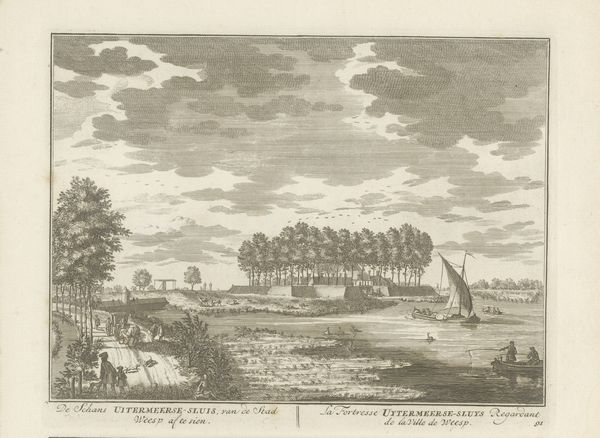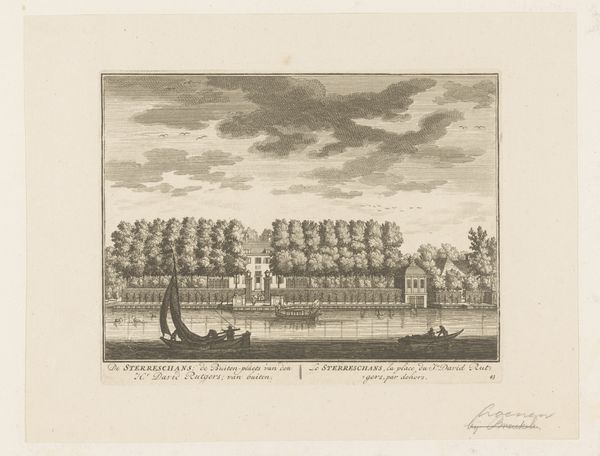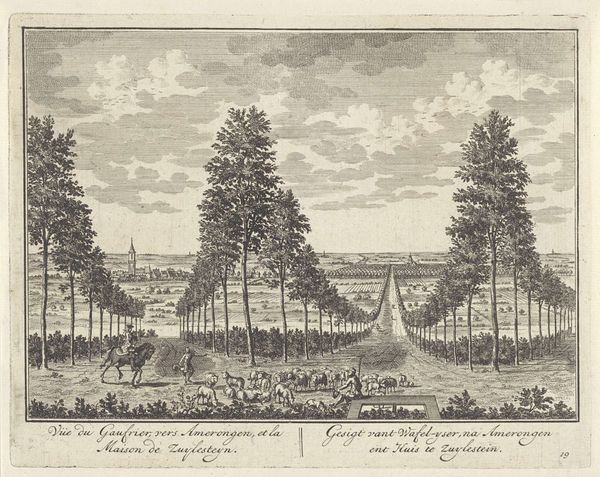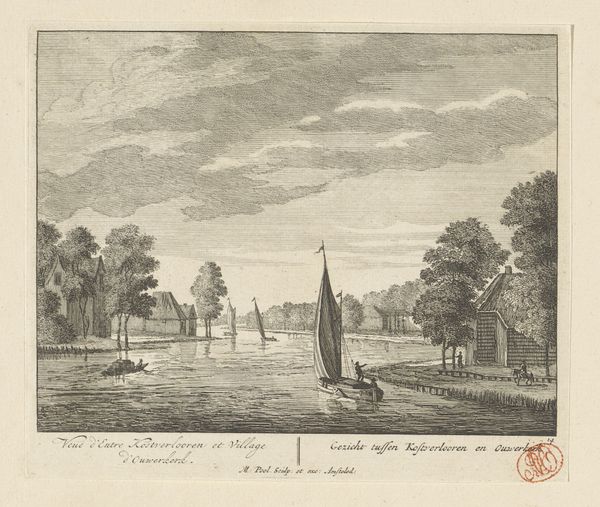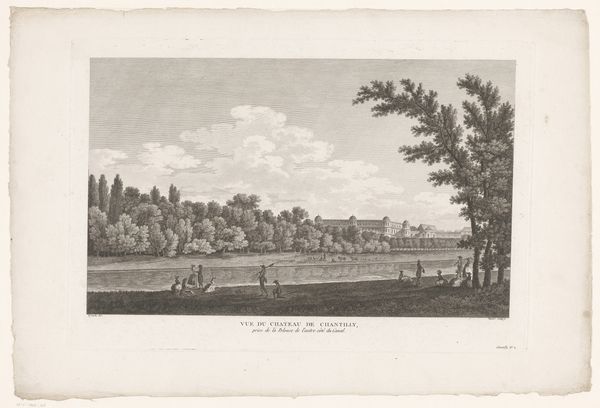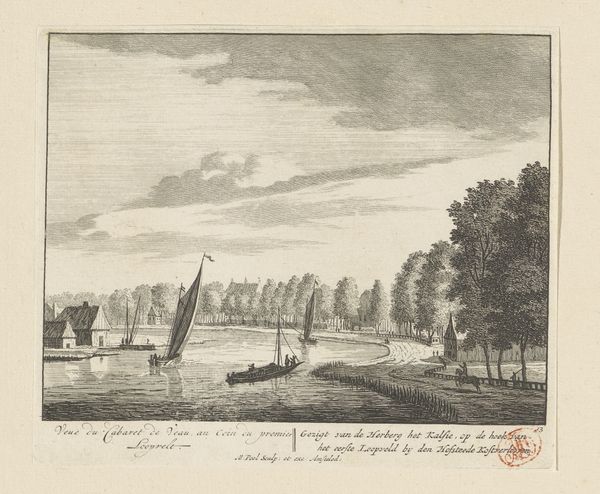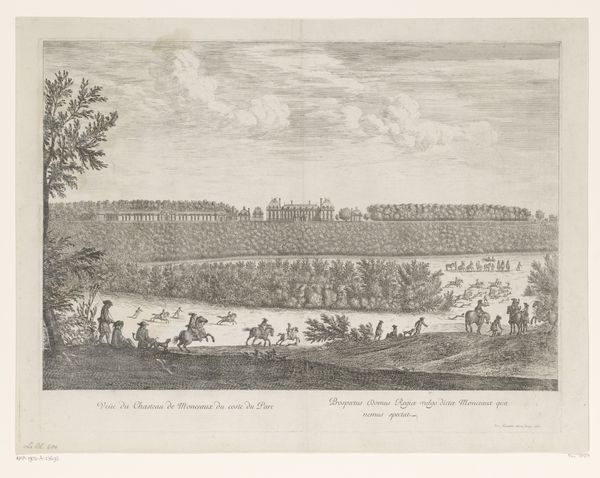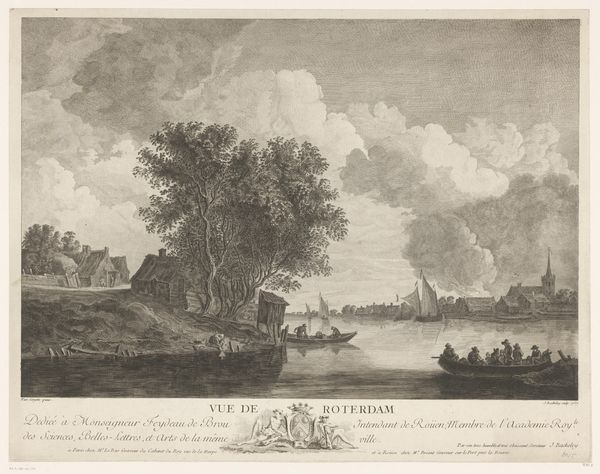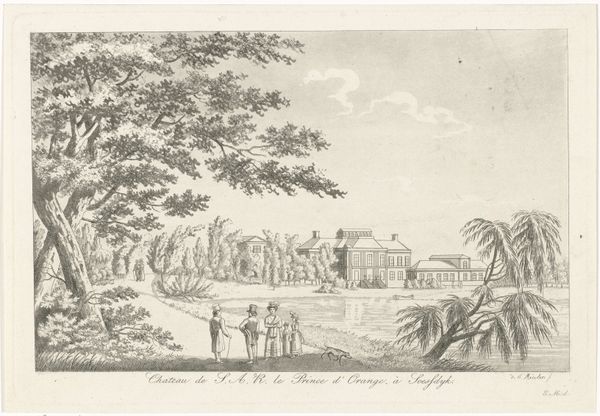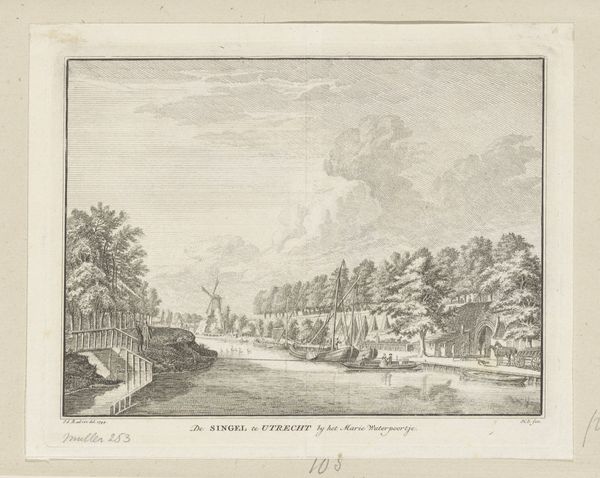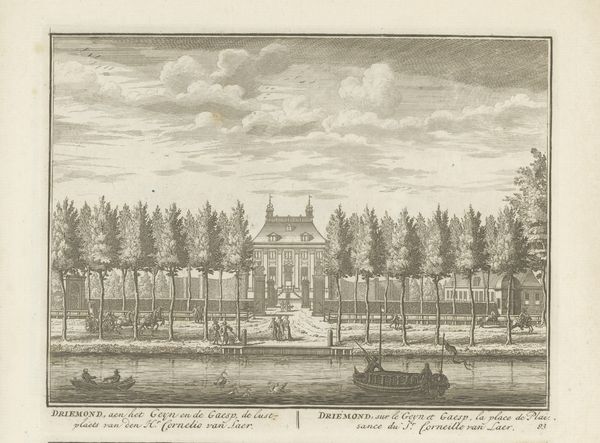
print, engraving
#
baroque
# print
#
old engraving style
#
landscape
#
cityscape
#
engraving
Dimensions: height 170 mm, width 228 mm
Copyright: Rijks Museum: Open Domain
Curator: What we have here is an engraving from 1719 by Daniël Stopendaal entitled “Gezicht op Groenevecht in Breukelen,” or "View of Groenevecht in Breukelen.” It's a cityscape depicting a rather idyllic scene. Editor: It strikes me as almost unnaturally peaceful. The symmetry, the ordered landscaping… it feels less like a real place and more like a carefully constructed ideal, even aspirational vision, despite that rather heavy cloud cover. Curator: You've keyed into a crucial point. Remember, prints like these served a function. This wasn’t just about accurately representing Groenevecht; it was about portraying it – and its owner – in a certain light. Stopendaal's style emphasizes order, prosperity, and control over nature. Think about the Baroque era’s fascination with grand estates as symbols of power. Editor: So, it’s less a slice-of-life and more an advertisement for wealth and status? The composition feels designed to project power. The river, the meticulously arranged trees… even the tiny figures enjoying leisure activities reinforce the idea of a perfectly managed world. Curator: Precisely. Engravings like these circulated widely, shaping perceptions of places and people. Stopendaal was quite a sought-after printmaker, documenting estates and townscapes throughout the Dutch Republic. And they became incorporated into books about important locations within the Netherlands, solidifying perceptions. Editor: I find myself wondering about the labor required to create this idealized landscape. The perfectly trimmed trees, the vast lawns…it speaks to the unseen hands that made such leisure possible for the owner. Also, I wonder how a wider range of people experienced it versus the ruling class who got to benefit most from it. Curator: A valid and crucial perspective. What's missing from the image is, of course, the story of those whose work sustained this estate. The print aestheticizes reality, it transforms material labor into an abstracted landscape. Editor: It definitely prompts critical questions. While the image might seem like a neutral record, its construction carries clear social and political messages. The focus on this idealized version of landscape serves as an opportunity to discuss what this has meant, and could mean, to communities. Curator: Ultimately, by understanding the context of the work’s creation, we see this tranquil landscape as a very constructed, propagandistic image. It also invites discussions about environmental stewardship, sustainability, and land equity that very much matter now. Editor: It does offer a fascinating entry point into thinking about place and privilege throughout history, so to speak. Thanks to art and other forms of critical expression, we have a clearer picture of how humans experienced the landscape.
Comments
No comments
Be the first to comment and join the conversation on the ultimate creative platform.
